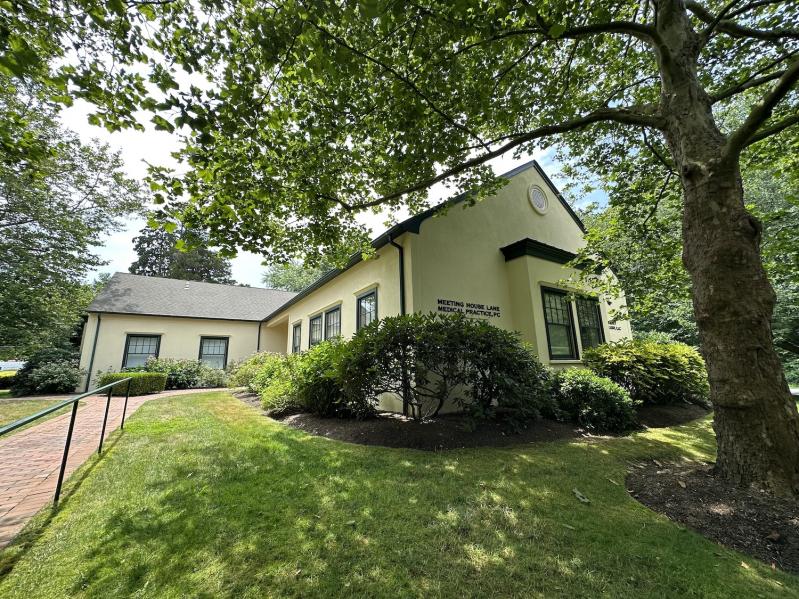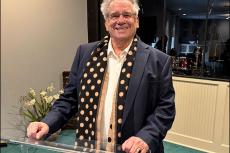In February, after almost a year of searching unsuccessfully for a medical assistant for his Wainscott dermatology practice, and with the impending departure of his receptionist, Dr. N. Patrick Hennessey turned to Facebook with a plea: Help us hire employees, or we’re going to have to close the office.
“The Wainscott office is continuing to operate only because employees from the Manhattan office travel to the Hamptons,” Dr. Hennessey wrote. “This situation cannot continue. . . . After serving the Hamptons community for over 20 years, this is not how I had planned to end the practice, but if this situation remains unchanged there will be no other option.”
Fast-forward a few months: “At the moment we’re functional, by virtue of three people who have been here less than six weeks,” Dr. Hennessey said in an interview.
Health care professionals all across the South Fork can relate. Trying to recruit, hire, and retain new people, from entry-level phlebotomists, medical assistants, and office staff to experienced nurses and physicians, has become a serious challenge, and the implications are dire. Patients endure their health complaints while waiting longer for appointments, test results, imaging services, and more.
“It’s not an uncommon problem at all. Not just in health care, but I think health care in particular is having a really bad time of it,” Dr. Hennessey said.
The cause, medical professionals said this week, is a cocktail of familiar ingredients: Housing is scarce here, the commute from points west is brutal, public transportation is sorely lacking, the cost of living is challenging, and there are lingering effects of the Covid-19 pandemic.
“Six months into the pandemic, I said that in three years we are going to have a complete dearth of the sort of entry-level people in medicine . . . which is exactly what we’ve seen,” said Dr. Hennessey. “I don’t see it getting a lot better.”
It’s at the point where salaries no longer seem to be the number-one issue driving employee shortages, said Sheila Rogers, the executive director of the East Hampton Healthcare Foundation. Rather, she said, it’s housing and commuting.
So, employers are sweetening the deal. “A lot of the practices are giving bonuses to employees, they’re buying them lunches, they’re changing their hours so they can take advantage of the railroad.” Ms. Rogers noted that the longer wait times are “very frustrating for patients on all levels. It just shows the need that we have here.”
Dr. Todd R. Griffin, who is Stony Brook Medicine’s vice chairman of clinical affairs and vice president for clinical services, said the Stony Brook system on the South Fork is “paying at the 90th percentile, above what most family or internal medicine doctors are getting.”
Registered nurses hired for Stony Brook Southampton Hospital start at $100,000, he estimated. Nurse practitioners and physician assistants start around $140,000. A doctor may make $250,000 and up, but have enormous student loans to repay. But a medical assistant may only be making around $60,000, Dr. Griffin said. “That’s hard to live on, out there.”
The Montauk and Amagansett offices of Stony Brook Medicine’s Meetinghouse Lane practice have lacked a dedicated doctor for months. The East Hampton laboratory actually closed for a few weeks in September 2022 due to an employee shortage.
Dr. Griffin expects the situation in Montauk and Amagansett, at least, to change very soon. “We have signed one new primary care person for Montauk and two others have accepted offers,” he said.
In recent months, Stony Brook has hired 34 new health care professionals for South Fork practices, in a variety of roles and specialties, Dr. Griffin said, and has brought in a consultant to gather and analyze data to create a “detailed road map” of medical needs across Suffolk County.
With Stony Brook’s satellite emergency care facility taking shape in East Hampton, Dr. Griffin said he’s already working on securing doctors, nurses, and other staff members. “It’s 14 to 15 months away and we’re already working on recruitment for that, because we know it will be a challenge.”
One practice that’s not struggling with staff is East Hampton Family Medicine. Its medical director, Dr. George Dempsey, said it may even be “overstaffed.” Some employees are allowed to work remotely; those who must commute can adjust their hours around traffic patterns.
Dr. Dempsey also attributed his ability to attract and retain employees to having relationships in the local community, unlike Stony Brook, New York University, Northwell Health, and Weill Cornell.
“I take care of the Latino population, which is 80 percent of who lives out here now. I have bilingual staff,” he said. “I could open an office in Montauk and staff it, but there is one big problem.” Private practices such as his are suffering financially, he said, because the larger medical groups have an advantage: “They can negotiate contracts with insurance companies where they get paid double or more for an office visit . . . I get the same that I got 15 years ago. I’ve been hiring to anticipate growing, but now it’s becoming economically not doable with the reimbursements we’re getting.”
“We are basically crying poor, but we’re rich in patients and providers. I’m really at a crossroads,” Dr. Dempsey said.
Northwell Health declined an interview this week, but a spokesperson said in an email that “since the start of the pandemic, health systems across the country have faced a fluctuating labor market. Northwell has not been immune to this trend, but we have been able to leverage our internal staffing agency to maintain safe and robust staffing levels so that there is no impact on the quality of care we provide for our patients.”
Health care administrators have been watching national trends in medical education and tailoring programs to geographical needs. For instance, the East Hampton Healthcare Foundation has begun offering scholarships to local medical students who would commit to returning home to practice.
Stony Brook has an advantage in its seven different health-science schools, which Dr. Griffin said creates a pipeline of doctors, nurses, dentists, medical assistants, and others. That’s something that most regions don’t have. But how to entice the programs’ graduates to practice here?
“We have a lot of conversations with the faculty and nurses to look at our students as future colleagues,” Dr. Griffin said. “We have to embrace them and give them the great experience. Then they’re more likely to want to stay here.”




